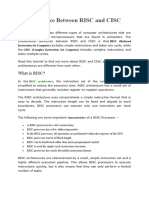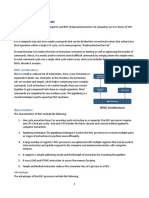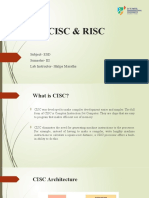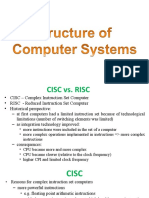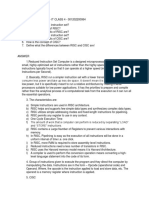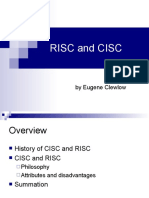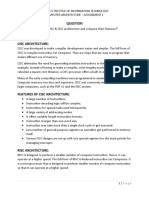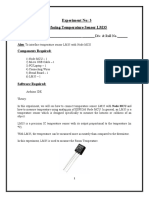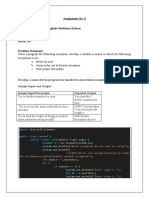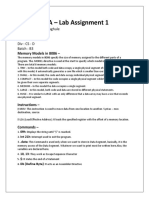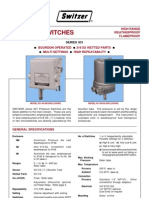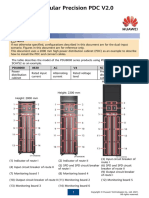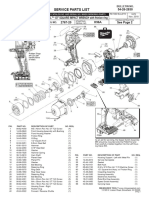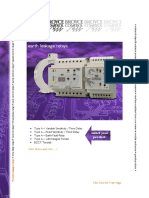0% found this document useful (0 votes)
112 views12 pagesCOAA Script
The document discusses RISC and CISC architectures. It first describes CISC processors as designed to minimize the number of instructions per program by ignoring cycles per instruction. CISC uses complex instruction sets and allows executing tasks with minimal code.
It then describes RISC processors as designed to reduce execution time by simplifying instruction sets so each instruction requires only one clock cycle. RISC uses highly optimized and reduced instruction sets.
The document also discusses a paper that provides a comparative study of RISC and CISC architectures, describing their properties, advantages, and differences. It concludes that the gap between RISC and CISC is narrowing as CISC processors adopt some RISC design principles.
Uploaded by
WAGHULE SHUBHAMCopyright
© © All Rights Reserved
We take content rights seriously. If you suspect this is your content, claim it here.
Available Formats
Download as DOCX, PDF, TXT or read online on Scribd
0% found this document useful (0 votes)
112 views12 pagesCOAA Script
The document discusses RISC and CISC architectures. It first describes CISC processors as designed to minimize the number of instructions per program by ignoring cycles per instruction. CISC uses complex instruction sets and allows executing tasks with minimal code.
It then describes RISC processors as designed to reduce execution time by simplifying instruction sets so each instruction requires only one clock cycle. RISC uses highly optimized and reduced instruction sets.
The document also discusses a paper that provides a comparative study of RISC and CISC architectures, describing their properties, advantages, and differences. It concludes that the gap between RISC and CISC is narrowing as CISC processors adopt some RISC design principles.
Uploaded by
WAGHULE SHUBHAMCopyright
© © All Rights Reserved
We take content rights seriously. If you suspect this is your content, claim it here.
Available Formats
Download as DOCX, PDF, TXT or read online on Scribd
/ 12






